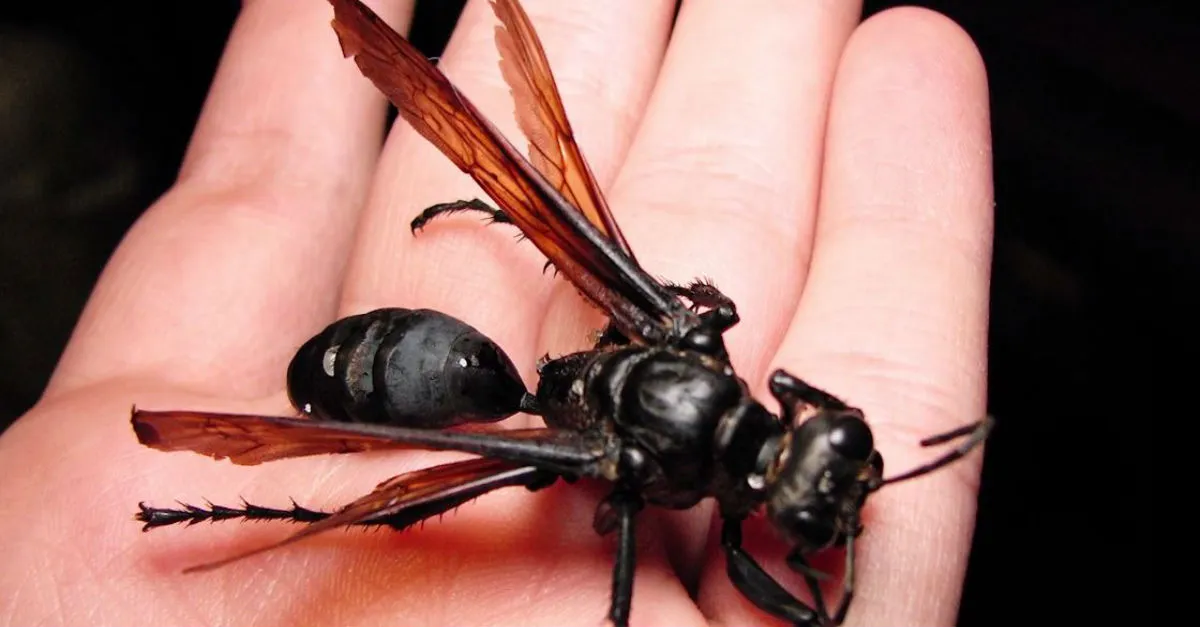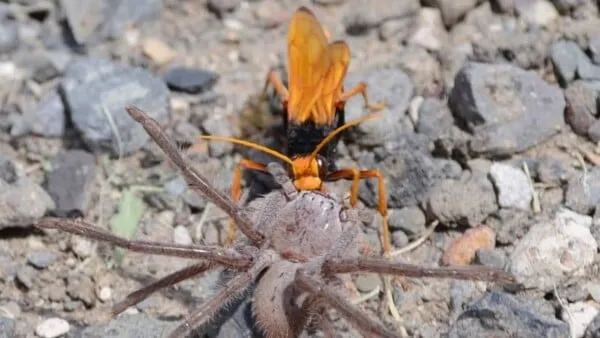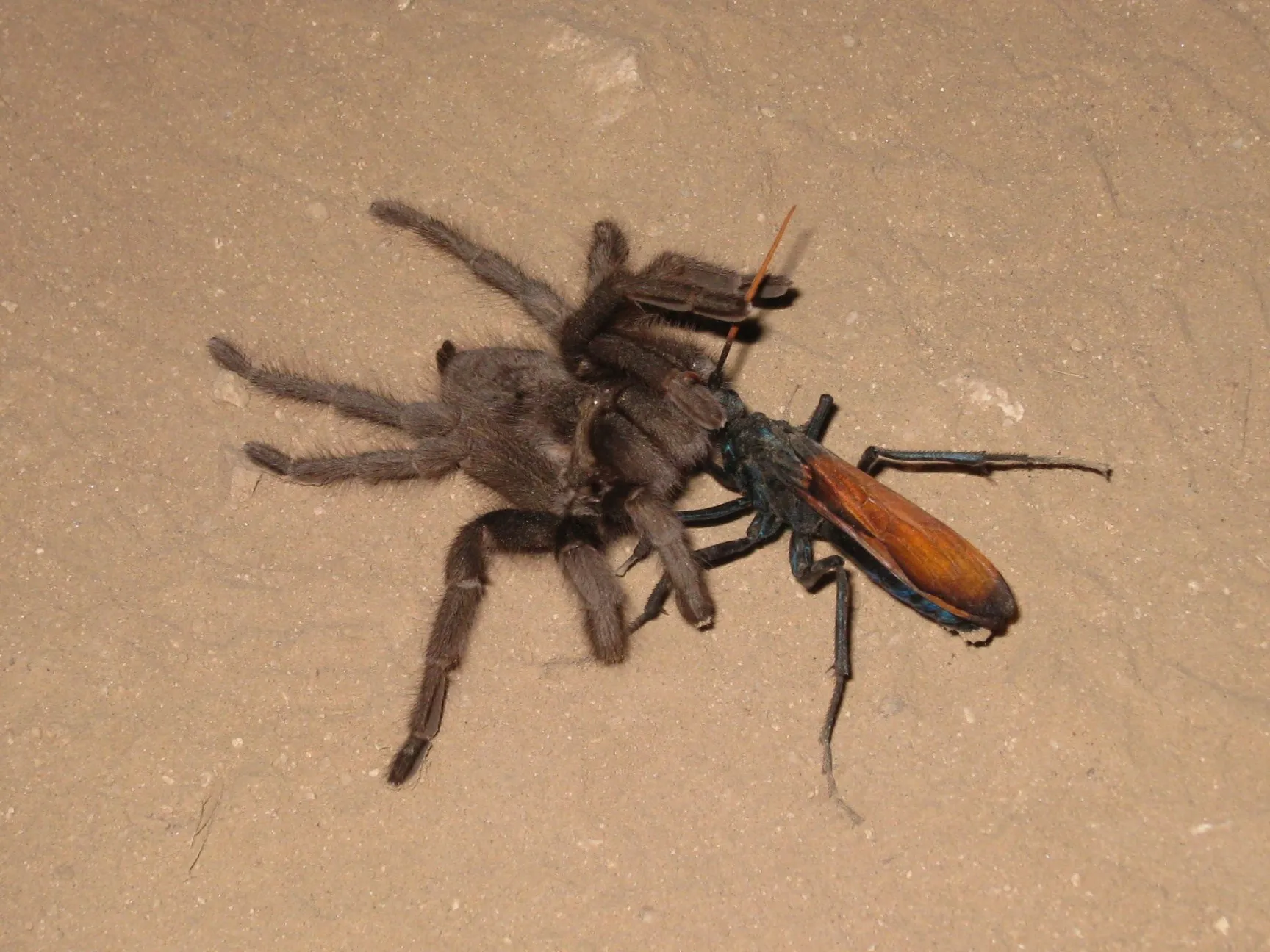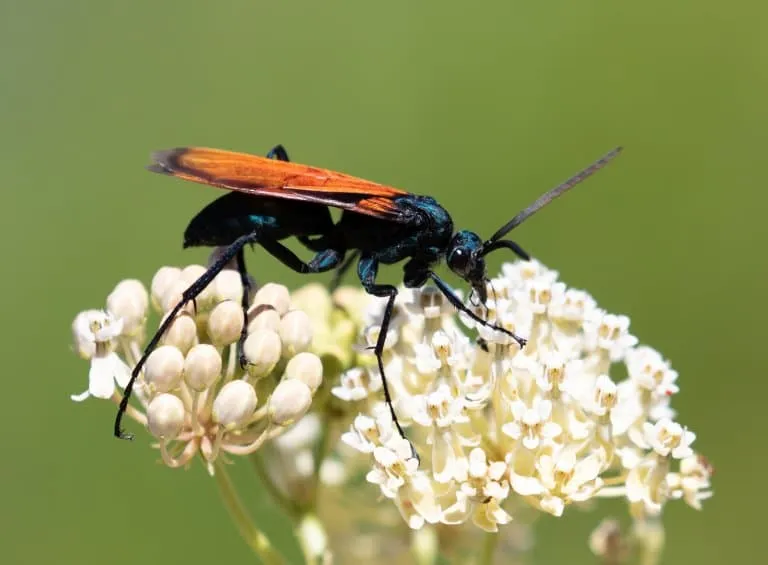Cow Killer vs Tarantula Hawk The Top 5 Facts
The world of insects is filled with fascinating creatures, and among them, the Cow Killer and the Tarantula Hawk stand out. These insects, both belonging to the order Hymenoptera (which includes wasps, bees, and ants), are known for their formidable appearances and potent stings. While they might seem similar at first glance, these insects have unique characteristics that set them apart. This article will delve into the top 5 facts about the Cow Killer and the Tarantula Hawk, highlighting their key differences, behaviors, and the environments they thrive in. Prepare to be amazed by the intricate details of these remarkable creatures.
Fact 1 Cow Killer’s Appearance
The Cow Killer, despite its name, is actually a species of velvet ant, not a true ant at all. These insects are easily recognizable due to their vibrant colors and fuzzy bodies. The most common color variation is a bright red and black pattern, although they can also appear in shades of orange, white, or even completely black. The females, which are wingless, are the ones typically seen. They are covered in dense hairs that give them a velvety appearance. The male Cow Killers, on the other hand, have wings and are less frequently observed. Their striking colors serve as a warning to potential predators, indicating the presence of a painful sting. This warning coloration is a classic example of aposematism, where bright colors signal toxicity or danger.
Detailed Description of the Cow Killer’s Physical Traits

Focusing on the physical attributes, the female Cow Killer is typically about 1/2 to 3/4 inch long. Their bodies are robust and covered with short, dense hairs. The most notable feature is the bright coloration, with the red and black variants being the most recognized. The texture of their bodies is velvety, hence the name ‘velvet ant’. They have powerful mandibles used for biting, and a stinger at the end of their abdomen, used to deliver a potent venom. The males, being winged, have a more elongated body structure and lack the velvety appearance of the females. Their primary function is to mate, and they are less likely to sting, although they can still inflict a painful bite.
Fact 2 Tarantula Hawk’s Size and Appearance
The Tarantula Hawk, a species of large spider wasp, is known for its impressive size and striking appearance. These wasps are among the largest wasps in the world, often measuring up to 2 inches in length. Their bodies are typically a deep, iridescent blue or black, with orange or rust-colored wings. This contrasting coloration makes them easily identifiable in their natural habitat. The Tarantula Hawk has long legs, used for walking and grappling with their prey. Unlike the Cow Killer, the Tarantula Hawk is a winged insect, both males and females, and can fly swiftly. Their physical appearance is a testament to their predatory lifestyle, with robust bodies and powerful jaws.
Distinguishing Features of the Tarantula Hawk
The key features that distinguish a Tarantula Hawk include its large size and distinctive coloration. The combination of a dark body (often a metallic blue or black) with bright orange wings is unique. Their long legs and powerful mandibles are also essential features. The stinger of the Tarantula Hawk is known for being one of the most painful insect stings. The females are equipped with a stinger that is used to paralyze their prey – tarantulas. The wings, which are a vibrant rust color, enable them to fly efficiently, allowing them to search for and hunt tarantulas across various terrains. They can be identified by their size and distinct flight pattern.
Fact 3 Cow Killer’s Habitat and Distribution

Cow Killers are commonly found in the southern United States, particularly in areas with sandy or open habitats. They prefer open, sunny environments like grasslands, fields, and even suburban lawns. Their distribution is influenced by the presence of their host insects. These velvet ants are parasitic, laying their eggs in the nests of other insects, such as ground-nesting bees and wasps. The larvae then feed on the host’s larvae or pupae. They are most active during the warmer months of the year. The specific habitat preferences allow for survival and reproduction. Their camouflage is helpful for hiding them from predators as they search for prey.
Geographical Range and Preferred Environments
The geographical range of Cow Killers extends across the southern United States, from Florida to California and north into some parts of the Midwest. They thrive in warmer climates and are often found in areas where their host insects are abundant. Their preferred environments are generally open spaces with sandy or loamy soils, which are suitable for nesting. The insects usually avoid dense forests. The distribution is also affected by the availability of nectar sources, as adult Cow Killers feed on nectar. Their presence is an indicator of a healthy ecosystem, as they play a role in regulating the populations of their host insects. They are important for maintaining balance in the local ecology. (See image Cow Killer habitat)
Fact 4 Tarantula Hawk’s Diet and Behavior
Tarantula Hawks are known for their unique hunting behavior. The female Tarantula Hawk hunts tarantulas, stinging them to paralyze them. She then drags the paralyzed spider to a burrow, where she lays a single egg on its abdomen. When the egg hatches, the larva feeds on the paralyzed tarantula, consuming it alive. The adult Tarantula Hawk feeds primarily on nectar and pollen. Their behavior is a perfect example of parasitism, where the larva benefits at the expense of the host. The hunting and nesting process is a remarkable display of the wasp’s instinct and strength. They are crucial in controlling tarantula populations.
Hunting and Feeding Habits of the Tarantula Hawk

The hunting habits of the Tarantula Hawk are remarkable and brutal. The female wasp searches for tarantulas, often in burrows or under rocks. After locating a tarantula, she engages in a fierce battle, using her sting to paralyze the spider. The sting is incredibly painful, earning it the second-highest pain index score of any insect sting. Once the tarantula is paralyzed, the wasp drags it to a pre-prepared burrow or nest, where she lays an egg on the spider’s abdomen. The larva, upon hatching, consumes the spider alive, feeding from the inside out. The adult Tarantula Hawks feed primarily on nectar from flowers, which provides them with energy for hunting and reproduction. (See image Tarantula Hawk Hunting)
Fact 5 Cow Killer vs Tarantula Hawk Stings
Both the Cow Killer and the Tarantula Hawk are known for their painful stings, but the nature and effect of each sting are quite different. The Cow Killer’s sting is often described as intensely painful, but the venom is not considered medically significant. The pain is immediate and can last for up to 30 minutes, often described as a burning sensation. The Tarantula Hawk, on the other hand, has one of the most painful stings in the insect world. The pain from a Tarantula Hawk sting is excruciating and can last for several hours. While the pain is intense, the venom is not usually life-threatening to humans, unless the victim is allergic or has a severe reaction.
Comparison of Pain Levels and Effects
When comparing the stings, the Tarantula Hawk is often considered to be the more painful. The Schmidt sting pain index places the Tarantula Hawk sting at a high level, near the top of the scale, while the Cow Killer’s sting is also very painful but generally shorter in duration. The Cow Killer’s sting results in immediate pain and sometimes swelling, while the Tarantula Hawk sting causes immediate, excruciating pain. The Tarantula Hawk sting can also lead to paralysis of the affected area. The effects of both stings are primarily localized pain and discomfort, and while rarely fatal, they can be highly unpleasant. It’s important to avoid provoking these insects to minimize the risk of being stung. (See image Cow Killer Sting)
In conclusion, the Cow Killer and the Tarantula Hawk are fascinating insects, each with unique characteristics and behaviors. The Cow Killer, with its vibrant colors and parasitic lifestyle, and the Tarantula Hawk, with its impressive size and hunting prowess, both play important roles in their respective ecosystems. From their appearances and habitats to their diets and stings, these insects offer a glimpse into the incredible diversity and complexity of the natural world. Whether you’re admiring their beauty from afar or learning about their behaviors, the Cow Killer and the Tarantula Hawk remind us of the wonders that exist in the insect kingdom.
